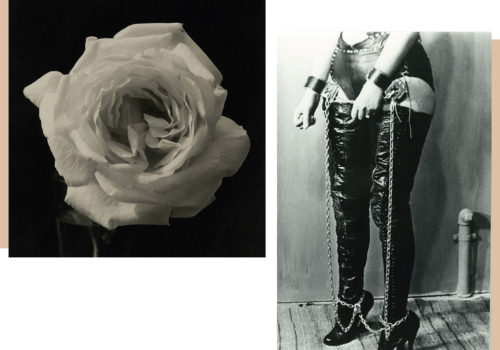This the fourth Dialogue of the Ettore Molinario Collection. Once more a tribute to fetishism. Next to a rose by Edward Steichen, the boots of an anonymous photographer from the 1960s. A bond unites them. I invite you to find out what is this bond and to follow us in our next appointments
Lovers of roses know that this sublime flower is divided into two parts and that each of them, so opposite, represents the convulsive, contradictory, chaste and cruel nature of the human heart. These adepts of pleasure are like two armies, that, instead of colliding in the open field, brush against each other, some bringing the corolla, some the stem, into their trenches. In 1920 Edward Steichen had already been a pictorialist, had already appeared on the pages of Camera Work, and was already the pioneer of fashion photography who three years later would be responsible for the image of Vogue and Vanity Fair. His rose, so delicate, so straight photography, speaks of a love so complete in opening up to the light and declaring the darkness from which the whirlwind of the petals is born. Everything is in balance between heaven and earth, between such a fragrant life and a perfume, rose water, used to prepare the dead for burial. And then the stem, those legs cut off in the shot by an anonymous German photographer in a Germany already divided by the Wall; those legs protected by chains and padlocks as if they were thorns, and those heels that rise swelling at the ankle like a fruit, and again those laces that tighten the skin of other animals to ours, are nothing more than the desire to protect and preserve this beauty. And whether we lean our lips on the petals or on the leather of the boots, little changes. Of love, of perfect love it’s what we are talking about.
Ettore Molinario
















